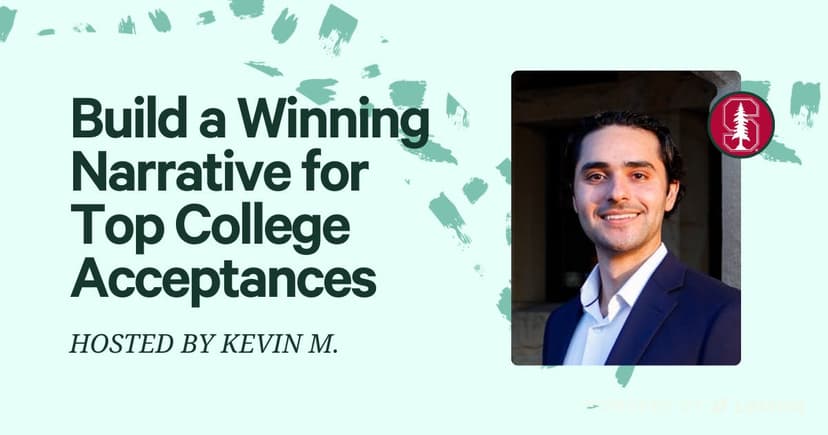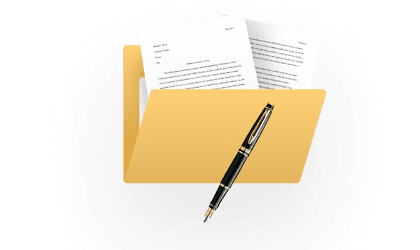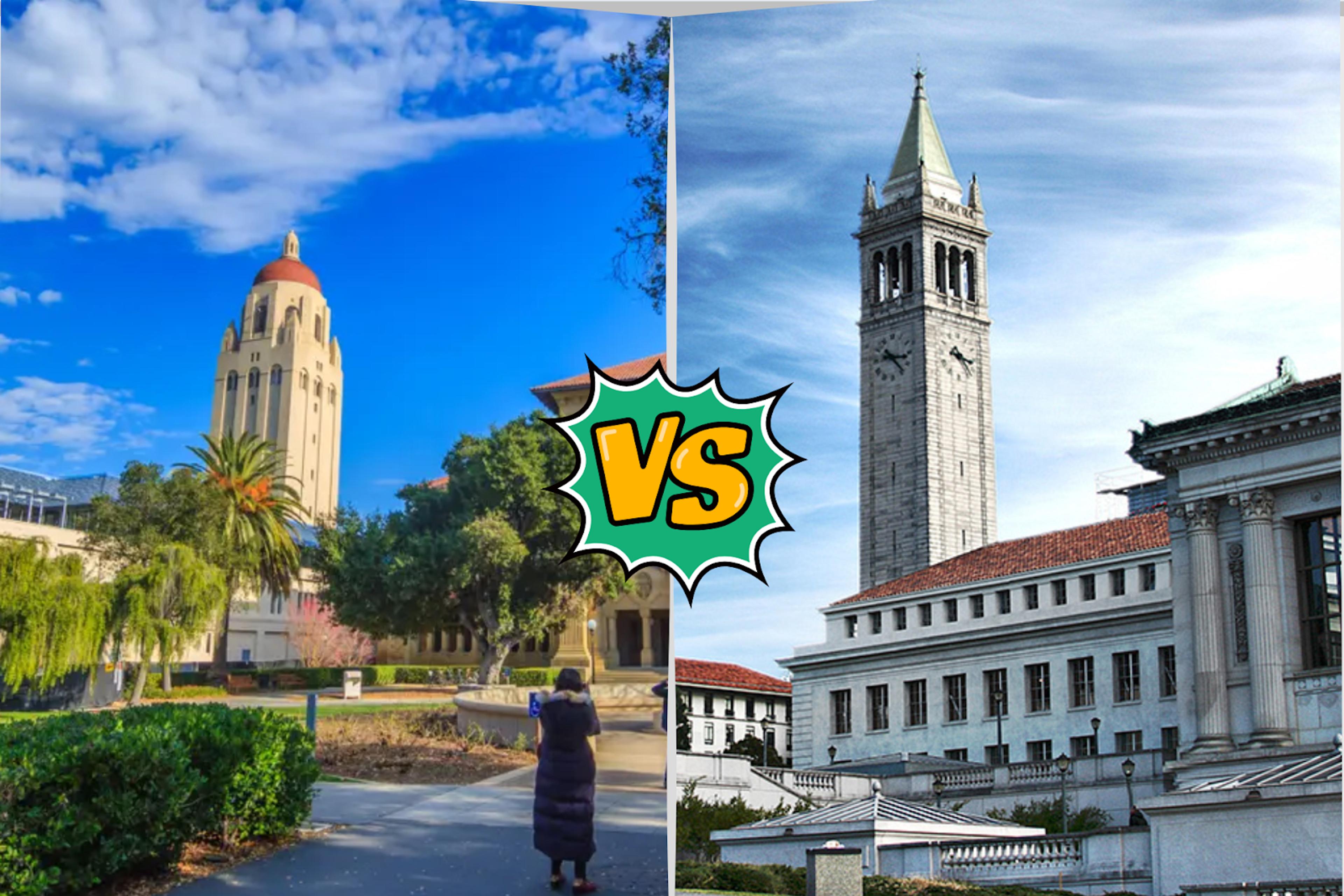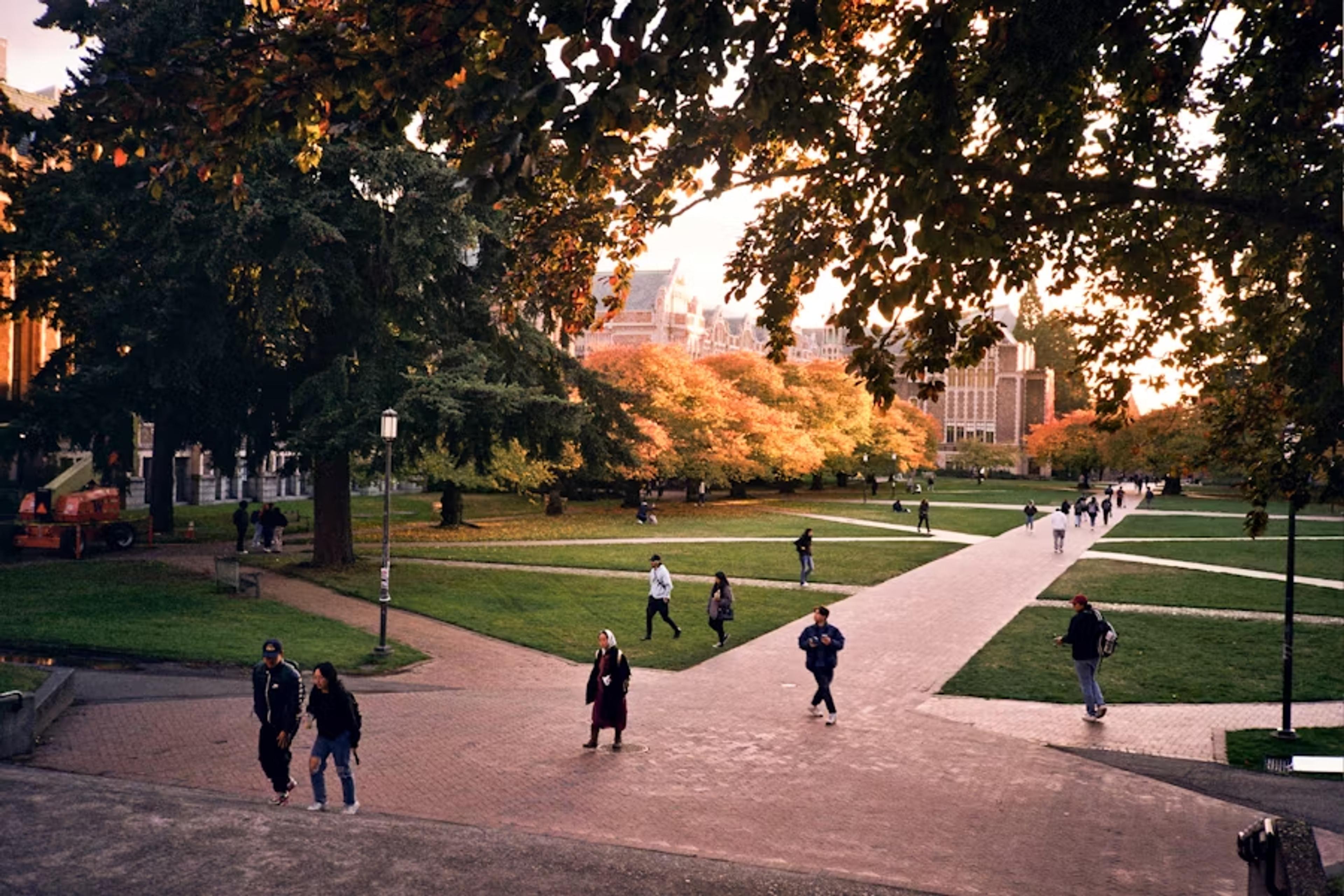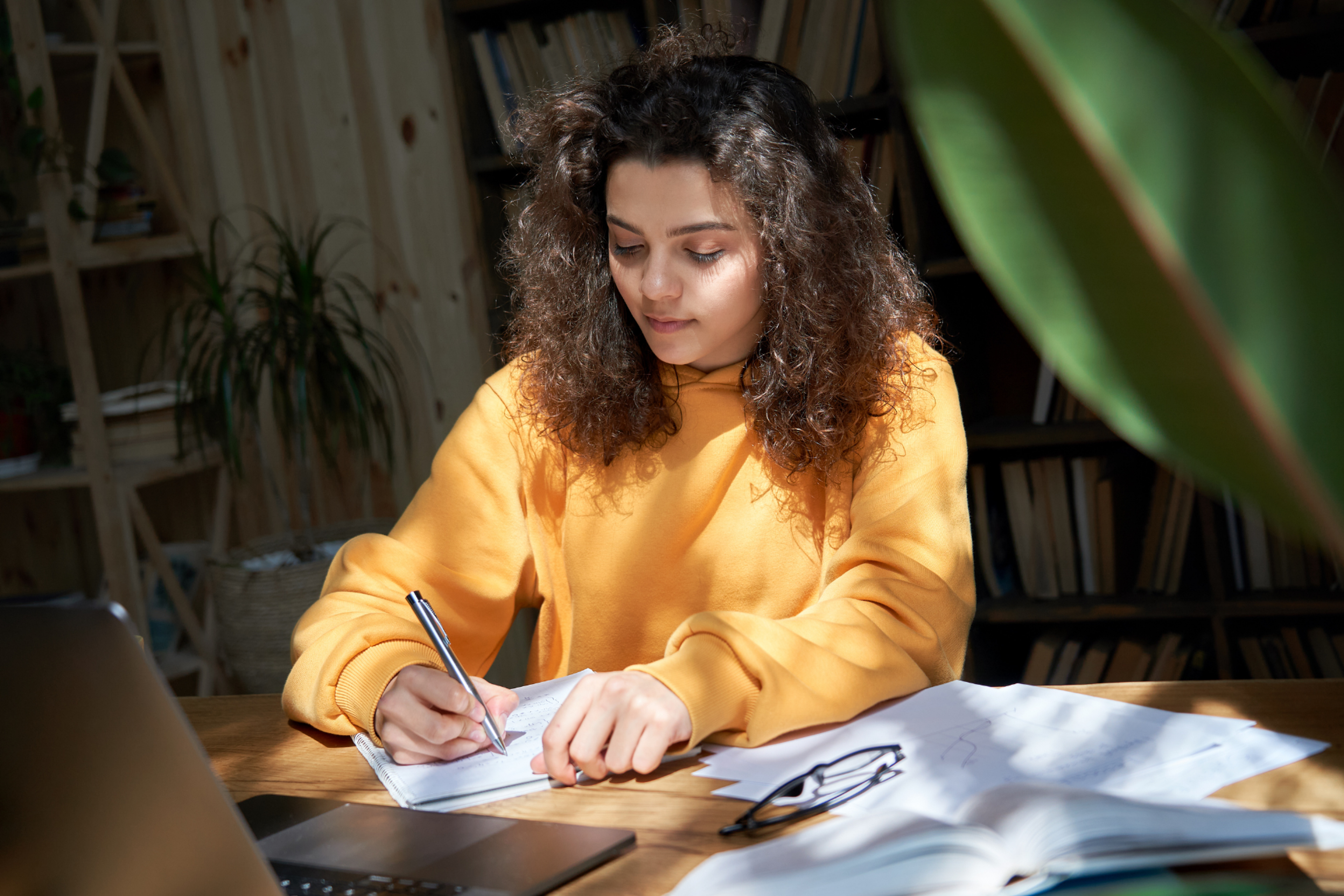The Freshman’s Guide to Stanford University: Curriculum, Program Structure, Top Classes, and More
Are you headed to Stanford or an aspiring admit? This article is for you, including top classes and professors, an overview of the undergrad program structure, info on the Bing Overseas Studies Program, and more.
Posted June 13, 2025

Join a free event
Learn from top coaches and industry experts in live, interactive sessions you can join for free.
Table of Contents
Stanford University is world-renowned for both its undergraduate and higher education degrees. It's known for several things including the engineering department, quarter system, research facilities, and high level of curriculum flexibility. It’s consistently ranked in the top ten best colleges and maintains a very high level of academic achievement.
Notable alumni include such giants as Former Presidents John. F. Kennedy and Herbert Hoover, Sandra Day O’Connor, Phil Knight, Sigourney Weaver, Peter Thiel, Cory Booker, and Tiger Woods, among others.
How Hard Is It To Get Into Stanford?
Every candidacy is unique, and nowadays, it’s no longer enough to have a good GPA and be “well-rounded.” Stanford is looking for applicants who are ambitious and driven, enjoy learning for learning’s sake, and who want to make a difference in the world. To get an idea of the applicants that Stanford is looking for, here is what the Class of 2025 looked like:
Class Size: 2,126 Freshmen
Gender:
Women: 51%
Men: 49%
High School:
Public: 60%
Private: 27%
International: 13%
Ethnicity:
Asian: 25%
White: 23%
Hispanic or Latino: 18%
International: 12%
Two or more races: 9%
Black or African American: 8%
Unknown: 5%
American Indian or Alaska Native: < 1%
Native Hawaiian or other Pacific Islander: < 1%
First Generation: 18%
Geography:
49 U.S. States
77 Countries
Stanford Curriculum and Structure
As mentioned, the curriculum at Stanford was designed to maximize flexibility. Students do not need to specify a major until the end of their sophomore year. They also have the opportunity to attend introductory seminars, pursue a double major, add a minor, write an honors thesis, take graduate-level courses, and graduate with both a master’s and bachelor’s degree in as short as four years (known as a “co-term”). The introductory seminars are especially valuable for freshmen and sophomores. They are essentially fun, easy classes taught by high-profile faculty or visiting professors like the Chairman of the Board at Google and the Top VC in Healthcare.
The faculty-to-student ratio at Stanford is 5:1 and over 70% of classes have 19 students or fewer in them.
Program Structure
Stanford runs on a quarter system. Each quarter is ten weeks long and students typically enroll for three of them: Autumn, Winter, and Spring. Because the class lengths are shorter, students at Stanford can take many more classes than they would in a semester-based system. During the first year, most students take around 15 credits composed of 3-4 classes, some of which may be 1-2 credits and others 3-5.
Core Curriculum Requirements
In order to graduate, students need to complete their major requirements as well as the General Education requirements. The GEs are in four areas and there are different options for completing the requirement in each. They are as follows:
1. Civil, Liberal, and Global Education Requirement (“COLLEGE”)
a. Take a COLLEGE class for two quarters of your first year OR
b. Participate in a special program that fulfills the requirement
2022-2023 COLLEGE Classes:
- Why College? Your Education and the Good Life
- Citizenship in the 21st Century
- Global Perspectives on Big Questions
COLLEGE Special Programs
- Education as Self-Fashioning (ESF): Seminar-style class designed to give students a foundation in rhetorical approaches to writing and speaking
- ITALIC Immersion in the Arts: A year-long program that includes lectures, sections, workshops, and guest speakers
- Structures Liberal Education (SLE): A “liberal arts college experience” that is residence-based and focuses on great works of philosophy, religion, literature, painting, and film
2. Ways of Thinking/Ways of Doing (“Ways”)
Required to take 11 courses in 8 Ways anytime during undergraduate career
(Two courses each will be in:)
1. Aesthetic and Interpretive Inquiry
Example Classes:
- AI-Activism-Art
- Introduction to Archeology
- Introduction to Greek Tragedy
- What Didn’t Make It into the Bible
2. Scientific Method and Analysis
Example Classes:
- Addictions in our World: From Physiology to Human Behavior
- Chemistry in the Kitchen
- Investigating Ancient Materials
- The Origin and Development of the Cosmos
3. Social Inquiry
Example Classes:
Spies, Lies, and Algorithms
Wealth of Nations
World History of Science
Beyond Health Care: The Effects of Social Policies on Health
(One course each in:)
1. Applied Quantitative Reasoning
Example Classes:
- Data Science 101
- Mathematics of Sports
- Decoding Genomic Function
- Remote Sensing of Oceans
2. Creative Expression
Example Classes:
- Queered Tech and Speculative Design
- Visual Thinking
- Wild Writing
- Stanford Laptop Orchestra: Composition, Coding, and Performance
3. Exploring Difference and Power (EDP)
Example Classes:
- Crime and Punishment in America
- Introduction to Feminist, Gender, and Sexuality Studies
- Social Class, Race, Ethnicity, and Health
- The Politics of Sex
4. Ethical Reasoning
Example Classes:
- Citizenship in the 21st Century
- Ethics in Bioengineering
- Introduction to Moral Philosophy
- Ethics and Equity in Transportation Systems
5. Formal Reasoning
Example Classes:
- Programming Methodology
- Minds and Machines
- Math Discovery Lab
- Introduction to Decision Analysis
3. Writing and Rhetoric Requirement (“PWR”)
Students must take PWR 1 and PWR 2, during which they will also complete a research project
- PWR 1: A four-unit course designed to teach academic analysis, college-level research, and argument techniques. It is project-based so students will use the majority of class time conducting research and writing projects.
- PWR 2: Also a four-unit course, PWR 2 builds on the skills learned in PWR 1 and adds oral and multimedia communication. Students will need to understand the effects of different communication mediums and use them effectively in their projects.
4. Language Requirement
Students must take one year of college-level study (or the equivalent) of a foreign language; options for fulfilling the requirement include:
- Complete the first-year language sequence
- Score a 4 or 5 on a foreign language AP test
- Score a 4 or 5 on the National Exam of World Languages (prior to matriculation)
- Score a 5 or higher on the International Baccalaureate exam
- Receiving a placement score test higher than the first-year courses
- Achieve the requisite score on the SAT-II Subject Test in the following languages:
- Spanish: 630
- French: 640
- Italian: 630
- German: 630
- Chinese: 630
- Japanese: 620
- Korean: 630
- Latin: 630
- Modern Hebrew: 540
International Opportunities: The Bing Overseas Studies Program (BOSP)
Stanford offers a robust study abroad program for its undergraduate students, which almost one-half of every graduating class takes advantage of. There are many different options for students to choose from, most of which last one full quarter. Other than airfare and extraneous expenses, the cost of a BOSP is about equal to that of remaining on-campus.
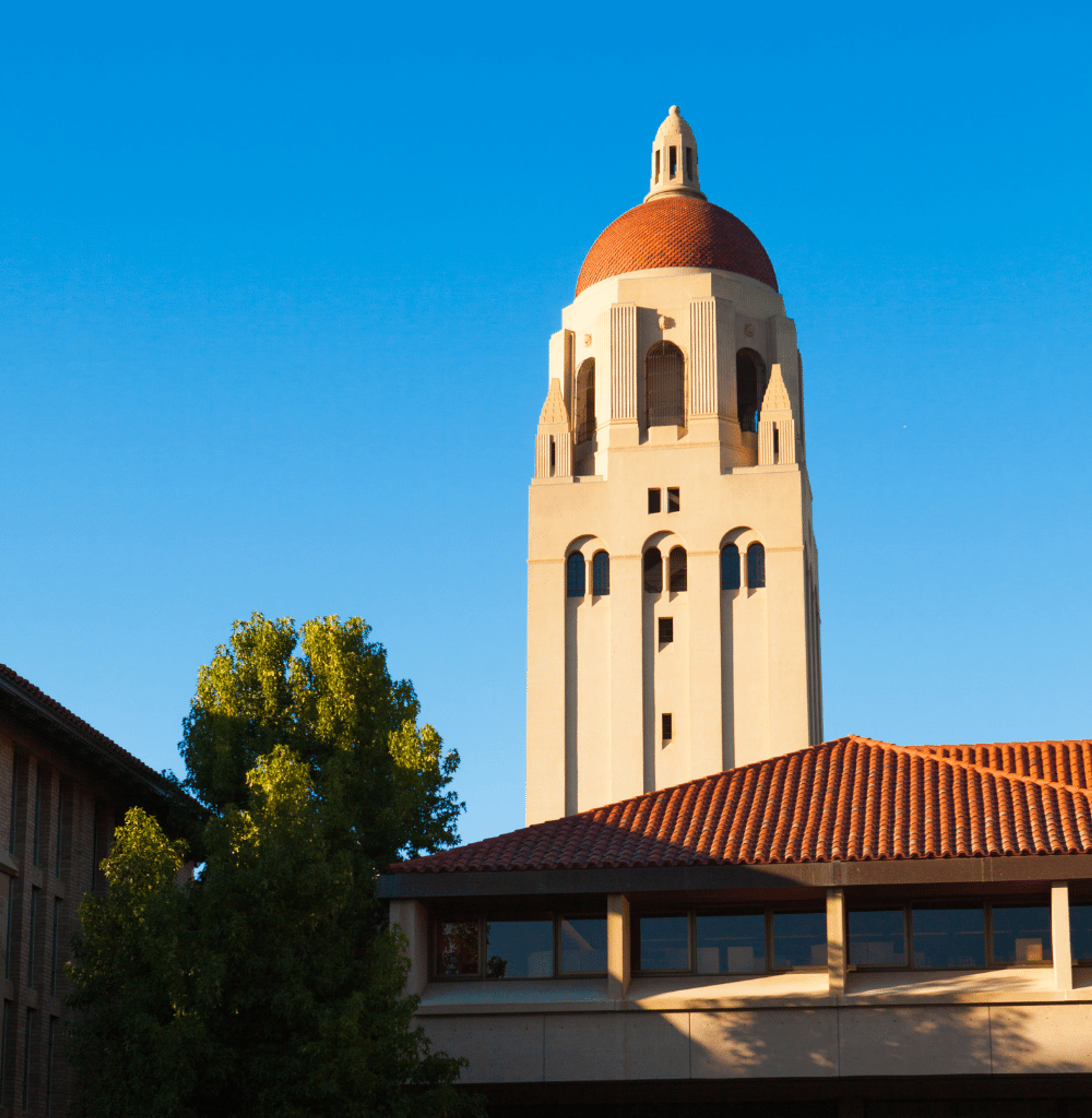
Quarter-length programs are offered in the following locations: Australia; Berlin, Germany; Cape Town, South Africa; Florence, Italy; Hong Kong; Istanbul, Turkey; Kyoto, Japan; Madrid, Spain; New York, NY; Oxford, England; Paris, France; and Santiago, Chile.
Stanford is also involved with a consortium program in Japan that can last either one or two semesters. Students will participate in immersive Japanese language and culture studies on both premodern and contemporary Japan. Though the consortium is officially run by Columbia University, Stanford participants will remain fully enrolled at Stanford, allowing them to remain eligible for financial aid.
In addition to the consortium and quarter-length programs, Stanford offers several short-term BOSPs that are two to four weeks in length and led by Stanford faculty. Traditionally offered in the summer, they are perfect for students who want a taste of studying abroad. Here are several examples from the Summer of 2021-22:
- Community Health (Oaxaca, Mexico)
- Exploring Israel’s Innovation Ecosystem for Sustaining Human and Planetary Health
- Interdisciplinary Introduction to African Urban Studies (Accra, Ghana)
- St. Petersburg: Imagining a City, Building a City (Russia and Estonia)
Undergraduate Research
Every year, Stanford allocates more than $5.9 million to support undergraduate research. Students from every discipline can take advantage of grants and other resources to work on an existing project or create a custom one suited to their specific interests. As an undergrad, there are different avenues, including independent research, departmental research, faculty research, and the Honors Program. See more about these options here.
Stanford University Faculty and Classes
The faculty at Stanford includes some of the brightest minds from around the world. The culture that the school fosters is one of mentorship: both students and teachers are regarded equally as scholars. Of the current staff, there are 127 Rhodes Scholars, 68 Truman Scholars, 19 Nobel Laureates, 4 Pulitzer Prize winners, 22 MacArthur Fellows, and 2 Presidential Medal of Freedom Recipients.
Top Rated Professors
At a school like Stanford, it’s hard to go wrong with professors. However, here are some of the top-rated teachers to watch out for as you select classes for the upcoming school year, based on ratemyprofessors.com ratings. A great professor can often make a class, turning what you thought would be a mediocre curriculum into something far more interesting.
1. Steven Roberts
Department: Psychology
Professor Roberts received his BS from NYU in Applied Psychology, and an MS and Ph.D. from the University of Michigan, both in Psychology. He’s interested in the psychological bases of racism, and how to dismantle them.
2. Ruth Starkman
Department: Writing and Rhetoric
Starkman has had an illustrious career as a writer, and she teaches courses on a wide range of subjects including political philosophy, biomedical and computer ethics, and rhetoric. She speaks four languages and is passionate about building equity in computer science.
3. Kurt Carasquilla
Department: Business
Professor Carasquilla is a Senior Vice President at Morgan Stanley and has taught at both Stanford and UC Berkeley. He specializes in Wealth Management and received the Tim Kochis Teaching Award in 2006.
4. Mehran Sahami
Department: Computer Science
Sahami is the current James and Ellenor Chesebrough Professor in the School of Engineering and the Associate Chair for Education in the Computer Science department. Before joining the Stanford faculty, he was a Senior Research Scientist at Google. He is interested in artificial intelligence and ethics and he was on the board responsible for creating CS curriculum at an international level.
5. James Campbell
Department: History
Professor Campbell is the Edgar E. Robinson Professor in US History at Stanford. He was a finalist for the Pulitzer Prize in History in 2007 and has received several teaching honors, including the Phi Beta Kappa Award for Undergraduate Teaching. He received his bachelor’s degree from Yale, and both his M.A. and Ph.D. from Stanford.
Top Rated Classes
Sometimes, regardless of the professor who teaches the class, the subject matter itself is enough to receive accolades. Here are some of the top-rated courses at Stanford University that students have consistently praised.
1. CS 106A: Programming Methodology
The introductory class to computer science at Stanford, it is considered a must-take for all undergrads. Students will be introduced to modern software engineering principles including program design, decomposition, abstraction, and more. No prior programming experience is required.
2. English 146S: Secret Lives of the Short Story
This course reviews a range of American writers and explores the short story’s evolution from its emergence in the 19th century to modern times.
3. PSYC 135: Dement’s Sleep and Dreams
Since its inception in 1971, this class has remained an icon of the psychology department. After the professor who created it–Dr. William Dement–passed in 2020, the class was renamed in order to honor his legacy. It covers the knowledge of sleep neuroscience and how sleep affects humans’ daily lives.
4. PHYSICS 16: The Origin and Development of the Cosmos
An overview of the universe, from its beginning to the present day, as well as the physical laws that govern its evolution. This course is designed to be accessible to non-science majors, so anyone can take it and learn a little bit about the cosmos.
5. PHIL 80: Mind, Matter, and Meaning
This philosophy course covers three main topics: the metaphysics of the mind, the nature of belief, and personal identity. It involves five papers and readings will come from philosophy, cognitive science, and more.
6. ME 104B: Designing Your Life
This course uses design thinking to help students constructively design their life and vocation. It is an experiential course meaning it includes seminars, discussions, written reflections, mentoring, and guest speakers. It is two credits and meets once a week in the Autumn, Winter, and Spring terms.
Final Note
Leland wishes you all the best as you go to college and enter some of the most transformative years of your life. Whether you have gotten into Stanford, are applying, or are manifesting admission for the future, we’ve got coaches to help you at every step of the way.
Applying for schools or scholarships? Here are several articles to get you started:
The Top 40 College Scholarships
How to Write a College Application Resume
What Looks Good on College Applications? 6 Tips to Make Your Application Stand Out
5 Tips for Time Management in College
5 Tips for Making the Most of Your College Years
Here at Leland, we provide you with the content, community, and coaching that you need to get into your dream school and accomplish other ambitious goals. Sign up today to gain access to additional free resources, community events, small group classes, world-class coaching, and more.
Browse hundreds of expert coaches
Leland coaches have helped thousands of people achieve their goals. A dedicated mentor can make all the difference.




